Suffocating.
That would be the perfect description of this encyclopedic place.
The air here is heavy, as if every cubic inch is impregnated with the weight of forgotten words, of knowledge long abandoned here. The old wood that makes up the walls, the floor, and the bookshelves seems to absorb time, worn down by it. The dark beams hold up the low ceiling.
The polished wooden shelves, though worn by centuries, rise imposingly to the ceiling. Leather-bound books and polymer-covered volumes rest side by side, exuding the scent of old paper and dried wood. I feel frozen in time while the world outside keeps moving—especially with the unsettling news I have yet to process.
I ran my right hand along a shelf in the culture section, my fingers gathering dust. A sigh escaped my lips as I pulled out a book at random: Florean and Hictian Cuisine.
As I opened the cover, a cloud of dust lifted into the stifling air, making me cough softly. Just the title already promised a tedious journey—two nations competing to see who could turn eating into an exercise in excessive gourmet refinement. How refined does the act of eating need to be?
I rolled my eyes, remembering the countless times my ‘mother’ insisted I should avoid raw meat or unrefined grains, as if that were the pinnacle of civilization... No, no confusion—I am the normal one here, not her.
"What a delight," I murmured sarcastically, flipping through the first few pages with little interest. A culinary duel between two peoples I barely know, whom I had only recently heard of. D. Jhos Zoli, a renowned author and gastronomic chef from Hictia, and apparently the head chef of the Palace of Sedrons. The title sounds empty, just as the author himself seems to be, but there was something in his arrogance that caught my attention.
My eyes skimmed over his words with growing disdain: "Lacking culture, a cheap imitation without any trace of authenticity, Floréan cuisine is nothing more than a poorly told joke compared to the rich and sophisticated Hictian gastronomy." The condescending tone was obvious, and his self-important monologue continued: "As the culinary coordinator of the Palace of Sedrons, I have full authority on the subject."
I imagined this so-called Palace of Sedrons, a place where opulence reigned supreme. According to descriptions, the palace was an architectural marvel, with hand-carved marble walls, modern enough with its steel framework, each detail crafted by artisans and metallurgists who dedicated their lives to perfection. The towering columns, made of obsidian fused with marble—far too polished—held up ceilings decorated with gilded frescoes and vaulted designs, while grand stained-glass windows projected unfiltered light onto dark, wide platinum-tiled floors.
In the great banquet hall, glass and solid marble tables were draped with finely embroidered tablecloths, and atop them rested dishes as ornate as pieces of art. The palace’s wood, unlike the shelves in this library, was alive, gleaming under the sunlight. A stark contrast to the heavy, suffocating atmosphere here.
The author's description continued bombarding the reader with harsh critiques of Floréan cuisine’s lack of authenticity. He exalted the supremacy of his own culinary expertise, boasting about complex and meticulously planned dishes that, honestly, seemed to have more steps than it would take to build a spaceship.
"He could easily organize a competition to see which nation wastes more time on insignificant details," I grumbled, flipping through a few more pages of intricate recipes. Rare ingredients, archaic techniques… Floréans and Hictians seem like true masters at turning something simple into an endless complication.
I closed the book with a soft thud, feeling my boredom grow. If anyone asks me about these culinary rivals, at least I’ll have a good conversation starter… or a perfect method of torture. I smirked, satisfied with my own irony, and returned the book to the shelf.
"I think I'll look for something more exciting. Maybe a spaceship construction manual. I bet that’d be more thrilling."
So many shelves, so many books… all old and outdated.
How does Aidan spend so much time here? This is unbearable!
My "mother" sent us to the library before her labor started today, in this decaying village. All because of Elder Nina, who insisted that "men cannot enter." Seriously? Use logic, woman of limited intelligence. If she had me and is now having my future brother, she and my "father" clearly have enough intimacy. As for me... well, I’ve been breastfed and seen her body unclothed more times than I’d like.
I walked a few meters down the aisle until I reached the historical accounts section. I dragged myself over, feeling the weight of the world. Standing on my tiptoes, I reached for a book on the upper shelf and tried to pull it out. It wouldn’t budge. With a little more force, I managed to loosen it, carefully so as not to tear it. To my surprise, the book looked new—very different from the others, which seemed to be 20 or 30 years old.
"A Visit to the History of Áurea: From the Ancient World to Modernity"
Written in Híctia, 3021 D.Ss
By Deihom Sedos, historian and economist of the Academy of Science and Innovation of Sedrons.
"The ACIS is a lucrative institution, highly competitive, especially among nobles. Funded by the Hictian state, it seeks to democratize knowledge by providing study materials to various regions."
"How honorable… Maybe I’ll study there someday, wherever Sedrons is," I thought, still skeptical about continuing to live, given the constant cycle of reincarnation and death.
"At least I still have a variety of knowledge from nature," I muttered sarcastically. I feel as if I’ve lost everything, an emptiness—as if there is nothing left to live for, no purpose or goals.
The book organizes history into clear categories:
1 - Remote Era
2 - Era of Memory
3 - Communal Era
4 - Era of Enlightenment
5 - Era of Starvation
6 - Era of the Automaton
While this structure makes understanding easier, the reading threatens to bore me to death.
Remote Era
The Remote Era of Aurea, spanning from 350,000 to 47,000 years before the War of the Suns, is the first and most obscure chapter in the planet’s history. Marked by the absolute isolation of the five species inhabiting its continents—Humans, Vilos, Orphins, Chordians, Elfins, and Ferals—this era was shaped by an unrelenting struggle against the ruthless forces of nature. Without complex records or organized systems, populations lived as nomads, endlessly cycling between abundance and devastation.
During the Zenith period, the predominantly cold planet underwent massive thawing. This led to humid heat that triggered colossal storms. Torrential rains flooded vast areas, rivers overflowed, and oceans rapidly rose, swallowing entire plains. Furious winds and cyclones ravaged forests, while thunder illuminated the skies in spectacles of destruction. The waterlogged soil gave way to landslides, and the air became heavy with moisture. Species retreated to makeshift shelters, caves, or higher ground, competing for space and the limited resources available.
During the Nadir period, the world plunged into an all-consuming cold. Ice advanced across lowlands, freezing rivers and lakes, while oceanic inversions disrupted marine currents, creating ice storms that devastated marine life. Tribes and clans withdrew into deep caves or migrated to less frozen regions. The greatest challenge was hunger: animals hibernated or migrated, plants disappeared beneath the snow, and scarcity intensified conflicts between groups.
Despite these extremes, Aurea experienced brief moments of balance during Gleam and Dusk, when the climate stabilized. During these fleeting times of peace, vegetation flourished, rains subsided, and the seas calmed.
Relations between species were virtually nonexistent. Each lived scattered across the continents of Laurexian, Gaetia, and Turus, isolated by vast distances and natural barriers. When contact did occur, it was marked by fear and violence—an instinctive battle for survival. There was no room for alliances or cultural exchanges; the hostility of the world forced each people to rely solely on themselves.
Although no written language or surviving records exist for academic study, traces of this era still endure. Primitive cave engravings depict scenes of hunting, battles, storms, and early rituals, suggesting an attempt to understand and appease the forces of nature. The Primeval Monoliths, stone structures aligned with the cycles of the four suns, appear to have been used to predict the onset of Zenith and Nadir, helping tribes prepare for times of crisis. Fossilized stone and bone artifacts, such as weapons and tools, reveal the ingenuity of these species in their struggle against the unforgiving environment.
The Remote Era left behind no kings, empires, or heroic legends, but it shaped the foundation of Aurea’s history. It was an age of learning, where survival depended on adaptation, resilience, and an instinctive understanding of the planet. The species that endured inherited not only the strength of their ancestors but also the legacy of a world that, even in its chaos, was already laying the groundwork for future eras.
Era of Memory
The Era of Memory, which began around 47,000 years before the War of the Suns, marked the transition of Aurea's species from a nomadic and instinct-driven existence to a conscious pursuit of permanence and legacy. During this period, the six species—Humans, Vilos, Orfinos, Chordás, Elfins, and Ferals—began recording their deeds and histories, establishing cultural traditions and the first infrastructures that reflected their adaptation to the planet’s hostile environment.
The oldest records from this era were rudimentary and varied according to species and their habitats.
The foundation of the first cities began to take shape, though they remained rudimentary and highly dependent on climate conditions. During the periods of Alvora and Poente, when the planet entered a state of balance, the species took advantage of the stability to build permanent shelters. Humans established villages along rivers and plains, using stone and mud to construct simple dwellings capable of withstanding moderate floods. The Elfins created small communities in the giant trees of northern Turus, connecting wooden platforms with suspended bridges and leaving the forest floor free for natural growth.
There isn’t much to see in this period. But something that stands out—and bothers me—is the absence of the Néfos in the planet's historiography. As a sentient species, they should be cataloged and cited in this book as part of civilization.
What??? A mapppppp!
Geography and Geology of Aurea
Aurea is a world of extreme contrasts and striking subtleties, where geography has played a fundamental role in shaping the civilizations that inhabit its continents.
Laurexian, the great northern continent, stretches like a small geological colossus, with vast mountain ranges, frozen plains along its spine, and dense forests. Known as part of the northern "Crown of Aurea," Laurexian lies between the two extremes of Gaetia and is rich in rare minerals, especially metals such as silicon, aluminum, copper, gallium, pure germanium, and uranium—used for both weaponry and peaceful applications. However, the continent’s harsh geography—covered in ice and snow during Nadir, swept by cutting winds, torrential rains with overwhelming force, typhoons, and hurricanes—has made settlement a challenge for humans and other species. The dominant species of Laurexian, primarily Humans and Elfins, developed deeply rooted cultures based on functional and miraculous architecture. During the months of Nadir Sun, Laurexian becomes an almost impassable tundra, while under the Gleam Sun, its boreal forests erupt in a fleeting explosion of life in the north, while the south transforms into a mild tropical forest with seasonal rains.
Gaetia, the largest continent, stretches from the frozen far north to the arid lands of the south. Its vast landscapes encompass a variety of biomes, from scorching deserts to fertile prairies and imposing mountain ranges, such as the Serene Peaks. This is where the history of nations unfolds with the greatest intensity. Northern Gaetia is a land of temperate climate and great rivers, ideal for agriculture and the rise of city-states such as present-day Loura. Meanwhile, the south is dominated by the Saeri'zar Desert, a relentless expanse of dunes and rock that spares no fools, with its hostile fauna and sheer aversion to life. The Sacramar Peninsula, with its coasts bathed in calm waters and rugged geography, has become a natural and political divide between north and south, symbolizing the split between the two great religions that originated in Gaetia.
Ocean currents play an essential role in Aurea, connecting continents and shaping the global climate. The Great Central Current flows along Gaetia’s eastern coast, bringing warm waters that moderate the climate of coastal regions. Meanwhile, the Fear Current, from the western oceans, unleashes devastating storms upon Turus and Laurexian during Zenith Sun.
Turus, at the far west of the map, is a continent shaped by the untamed forces of nature. Its geography features jagged coastlines, towering volcanic mountains, and a network of rivers that wind through dense tropical forests. Known as the "Dawn of Life," Turus is rich in biodiversity and natural resources, such as brownwood and primordial energy crystals, both crucial for arcane technologies throughout the ages. Despite its wild beauty, Turus is frequently struck by landslides and violent cyclones, making habitation in some areas a constant challenge.
Beyond its continents, Aurea is marked by unique geographical phenomena that define its identity as a living, dynamic world. The Serene Peaks, located at Gaetia’s pressure center, are renowned for their crystalline lakes and caves that glow with bioluminescence. At the heart of Laurexian lies the Aurem Abyss, a titanic rift plunging into unfathomable depths, surrounded by a magnetic field that disrupts navigation technology.
Lastly, the relationship between continents and oceans is mediated by large archipelagos that serve as hubs of cultural and economic exchange. These islands, such as Uru'kai, off the coast of Turus, play a crucial role in Aurea’s interconnected civilizations.


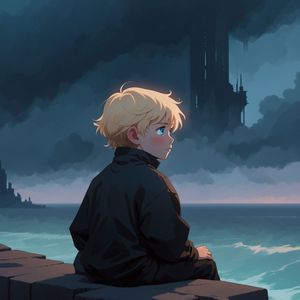

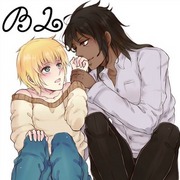
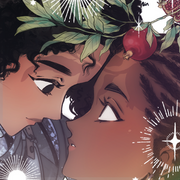
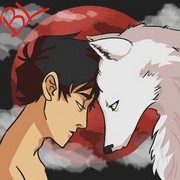




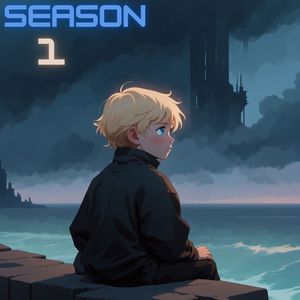
Comments (0)
See all